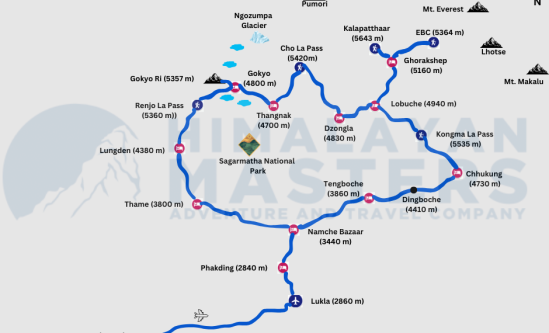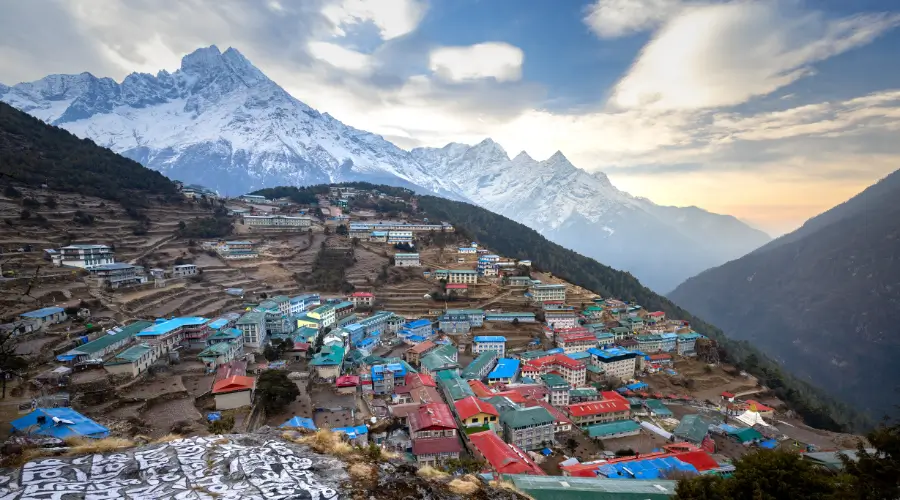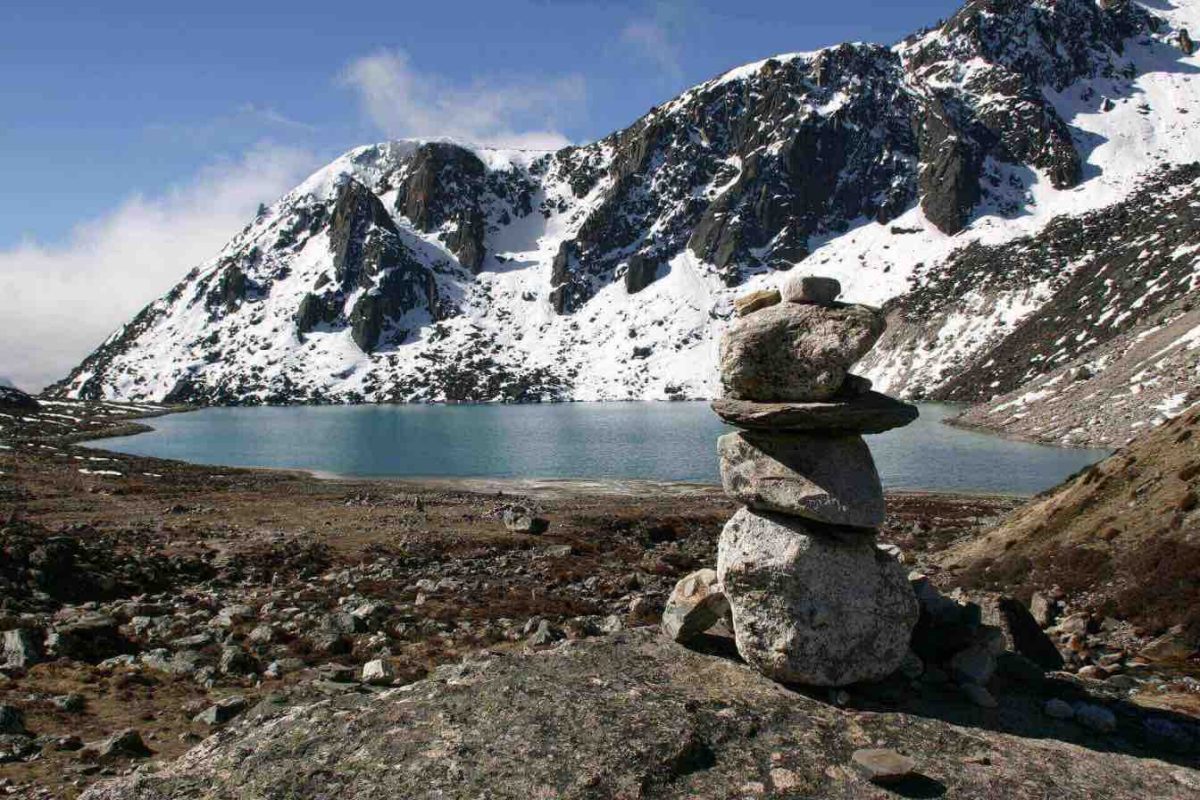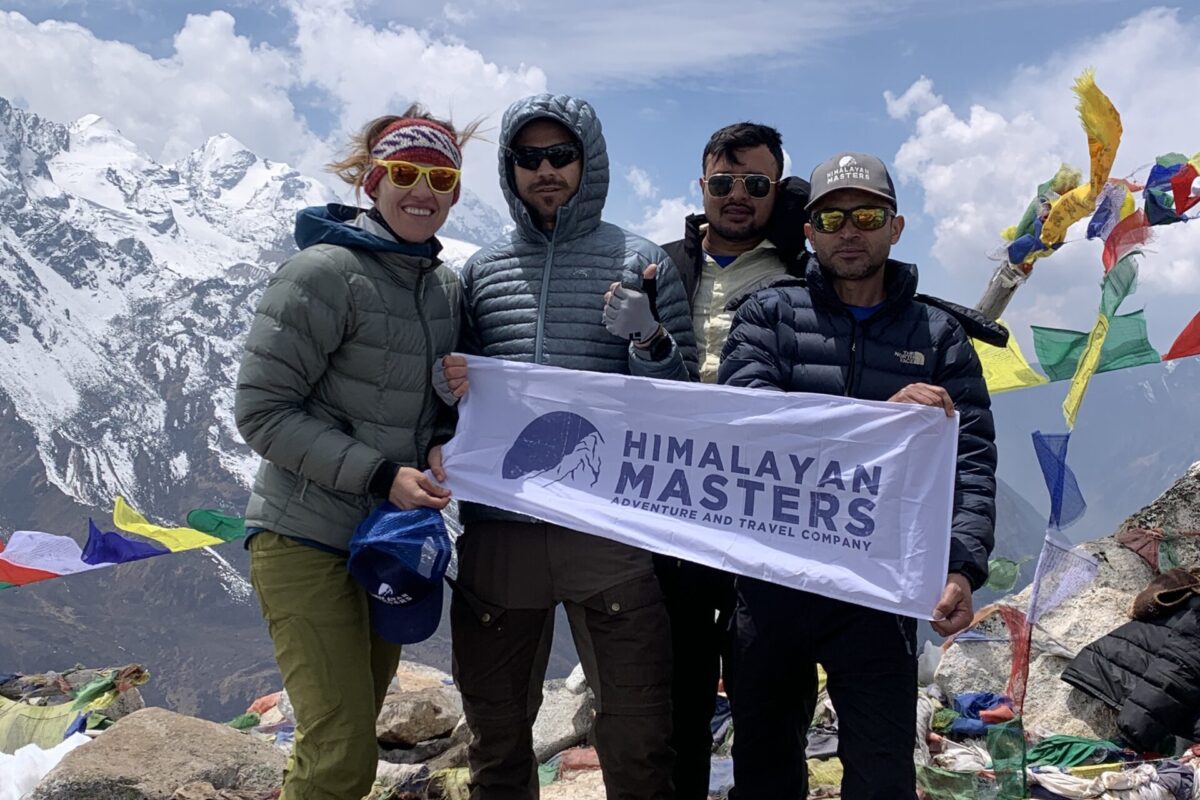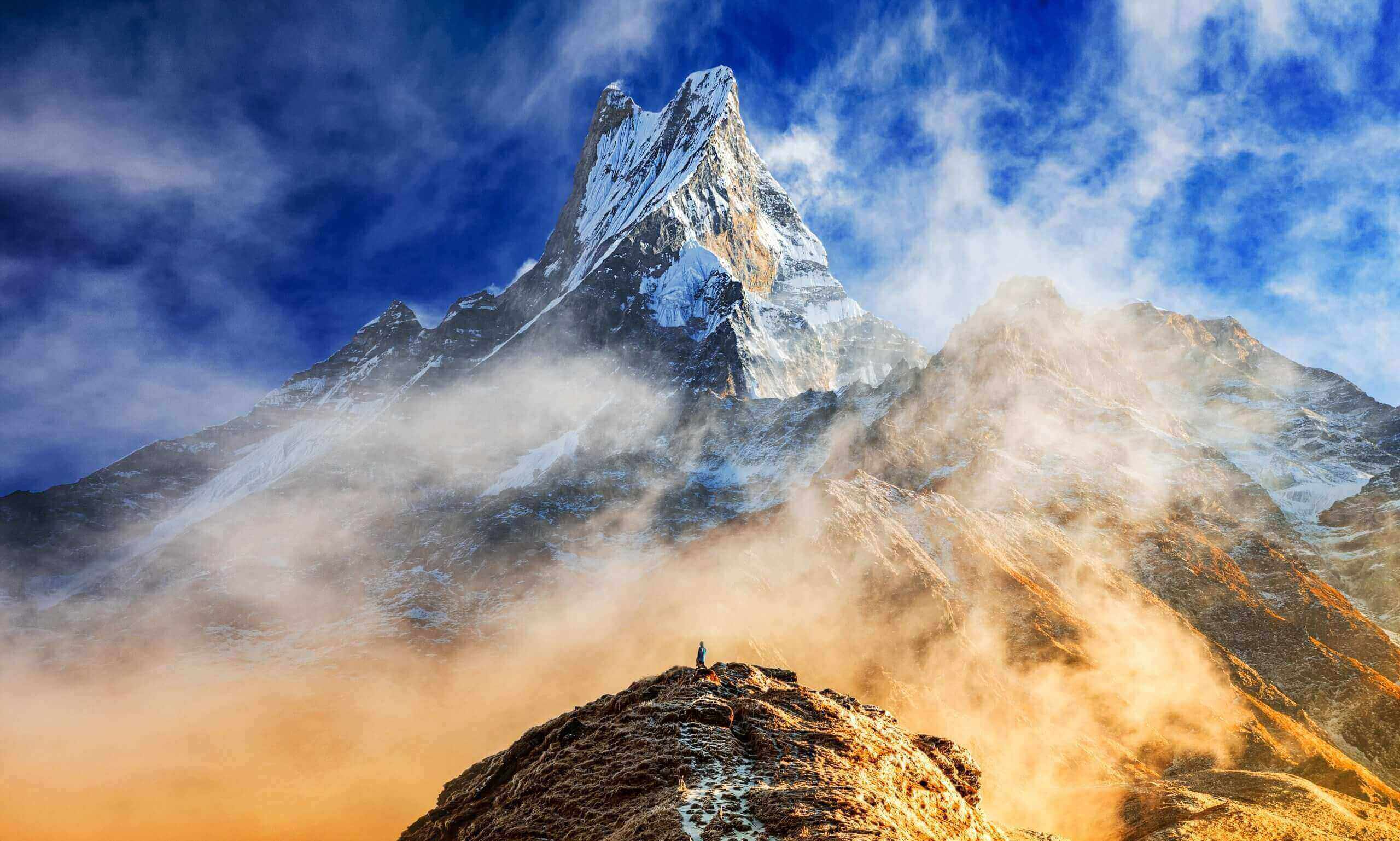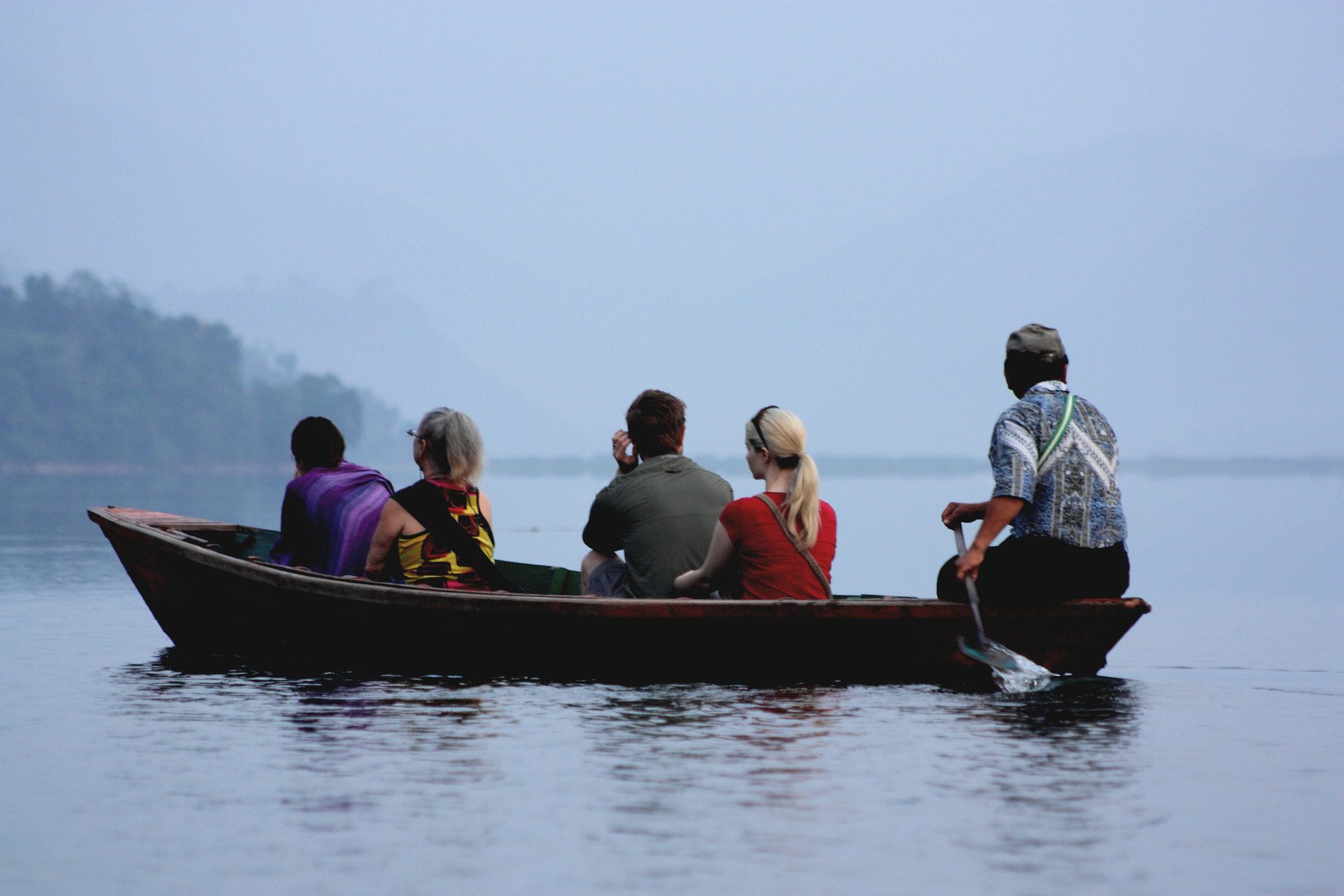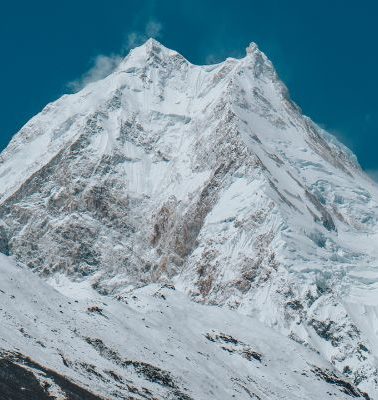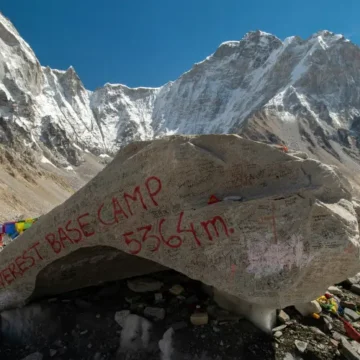

- TRIP DURATION
- 17 Days
- MAX. ALTITUDE
- Kongma La Pass (5,535m)
- TRIP GRADE
- Difficult
- LODGING
- Tea house
- BEST SEASON
- Springs and Autumn
- MEALS
- Breakfast lunch dinner
- COMMUNICATION
- Local sim card
- PER DAY WALK
- 6 to 8 hours
Everest Three Passes Trek
Are you seeking the ultimate experience of the mountain trek? Then, this Everest three-pass trek is the most holistic experience in the mountain trekking trail of Nepal. The Everest Three Pass trek takes you to the prodigious Everest Base Camp, and the journey goes wide and beyond to uncover the best of the Khumbu region.
The challenging experience of natural and cultural delight (Sherpa culture) during the Three Pass trek was a life-changing experience. Beyond Everest Base Camp, the highest passes you shall climb are Kongma La Pass (5,535), Cho La Pass (5420m), and Renjo La Pass (5,340m).
Everest, the world’s tallest mountain, has never failed to capture the attention of adventure freaks all around the world. However, this Everest three-pass trek takes you around the other tallest mountains, like Makalu (8,516m), Lhotse (8,516m), and Ama Dablam (6,812m). There are literally over a dozen mountain peaks that could be witnessed during this trip.
In addition to the challenging walks to the mountain, this Everest Three Pass Trek is also about Sherpa’s astonishing biodiversity and rich culture. Sherpas are the mountain people who lived in this semi-arid area for a century. They have experienced the peace and power of the mountain like no one else, and it’s a chance to witness the rich Tibetan Buddhist tradition.
Where Does This Everest Three Pass Trek Lead You To?
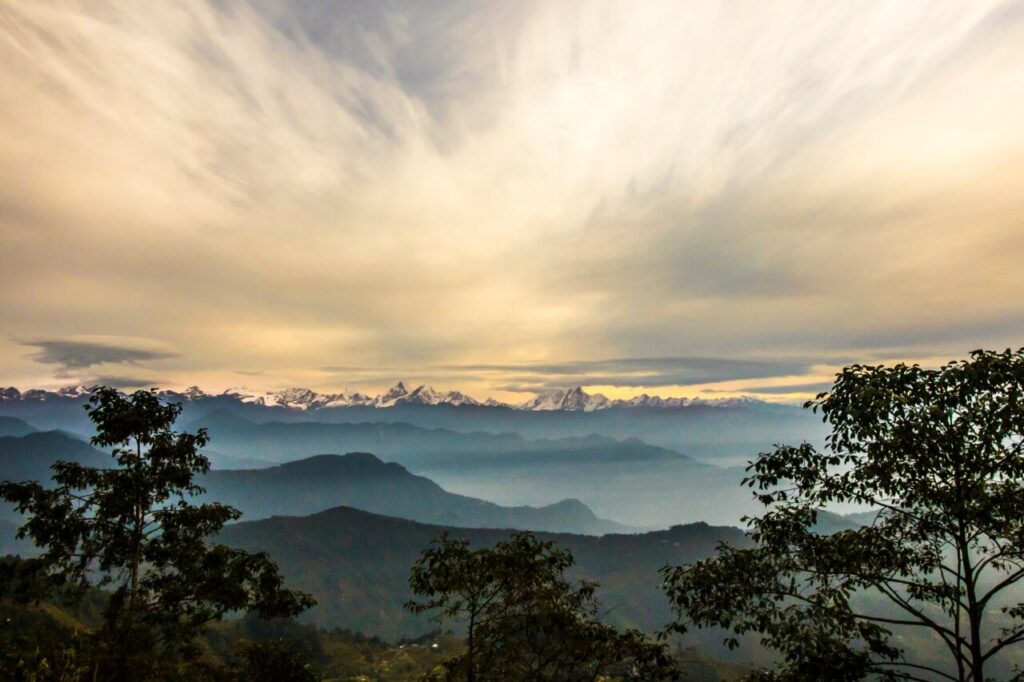
The Everest trek starts with a flight to Lukla airport (45 minutes) and goes around Namche Valley. Then, we leave the classic Everest Base Camp route and move to Thame and Lungden. Next, we cross the Renjola Pass and trek to Gokyo Valley. Walking back to Thangnak, we cross the Cho La Pass.
Next, we join the EBC route at Lobuche and wander in the Everest Base Camp on the 11th day. Then, we shall walk down to Lukla and get back to Kathmandu. Back home, the memories of this trip will remain with you forever.
Renjo, Chola, And Kongmala
This Everest Three Pass trek is about the highest passes in the Khumbu region. Between Lungden and Gokyo, we cross our first pass, i.e., Renjo La Pass, on the 7th day. Then, we shall climb to Gokyo Ri, which is also an equally challenging viewpoint. Our other big challenge is to cross Cho La Pass at 5420m.
Moreover, the most exciting climb is the Kongma La Pass at 5,535m. This pass lies between Lobuche and Chhukung. However, the highest point of our Everest Three Pass trek is actually Kala Patthar Viewpoint at 5,555m. The high passes are literally the most challenging part of this trip; the climb is very steep. However, the view you can witness from this hilltop is very rejuvenating.
Along with Everest (8,848m), you get to witness the beauty of Lhotse (8516m), Makalu (8,481m), Cho Oyu (8,201m), and Ama Dablam (6,812m). However, if the Everest Three Pass trek journey becomes difficult, you can skip these high passes. The options are unlimited.
Everest Three Passes Trek Highlights
- Go beyond the comfort of Everest Base Camp to conquer the highest passes in the Khumbu region.
- Exciting flight to Lukla airport- a mountain flight to one of the world’s highest altitude runway
- Wandering in the Everest Base Camp, the foothill of the world’s tallest mountain
- Panorama of dozens of mountain peaks in the Himalayas from the various viewpoints along the route
- Unbelievable bio-diversity of Everest View trek- 118 bird species, rarest Himalayan mammals, and sub-tropical/ alpine flora
- Live a very unique and exciting Tibetan Buddhist culture and festivals for a couple of days.
- Enjoy the comfort of local guest houses even in a very difficult mountain landscape- a very remote land.
Everest 3 Pass Trek Geography
The Everest Three Passes Trek begins by heading north into the mountains until reaching Namche Bazaar. Once there, hikers can choose between two directions: clockwise or counterclockwise. The counterclockwise route is more commonly taken and is recommended, especially for those experiencing high altitudes for the first time.
During the Everest Three passes, adventurers will traverse four valleys along with conquering the three challenging passes: Kongma La (18,209 ft / 5,550 m), Cho La (17,782 ft / 5,420 m), and Renjo La (17,560 ft / 5,360 m). Kongma La is often considered the most difficult due to its length, Cho La involves crossing a glacier where microspikes can be helpful, and Renjo La is generally thought to be the easiest. However, it’s important to note that the difficulty of each pass of Everest 3 Passes can vary depending on the ever-changing weather and conditions.
Important Lukla Flight Information*
Sometimes, especially when lots of people are trekking (March, April, May, October, and November), the plan for the trek might change a bit. Instead of flying to Lukla from Kathmandu, we might go from Ramechhap/Manthali because Kathmandu is very busy. If we’re taking a flight from Ramechhap, we’ll leave Kathmandu at 12:30 AM on the planned day, and the drive will take about five hours. On other days, we’ll fly from Kathmandu.
Best time for 3 passes trek
The success of an Everest Base Camp 3 passes trek depends on the weather, especially when dealing with high passes. While you can check the live forecast, it can sometimes be unreliable. The best times for an easier and more enjoyable EBC 3 passes trek are spring and autumn when the skies are clear and there’s no rain. The clear blue sky during these seasons makes the journey more pleasant, offering spectacular views without the challenge of extreme cold. Lower Everest trek like Pikey Peak can be done anytime but the case if different for the Three pass trek.
ITINERAY
Day 01: Arrival
As soon as you land in Nepal, the team will pick you up from the airport. We will also pick you up from other cities or bus parks around Kathmandu. The guide will help you pack your bags and shop some gear for the Everest Base Camp three passes trek in your free time. In the evening, we shall all gather for the welcome dinner.
Overnight in Kathmandu
Meal : Dinner
Accomodation : 3 star hotel
Walking / Driving : 30 mins drive
Day 02: Fly to Lukla and trek to Phakding
Altitude: 2,610 m
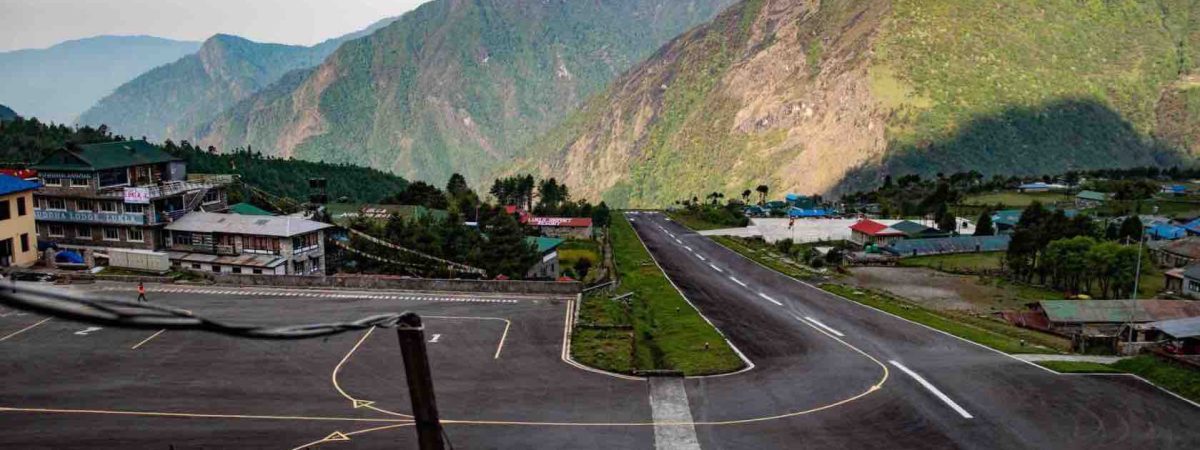
A private car picks us up from the hotel gate and drives us to the airport in the morning. We hop in a small domestic plane and start flying beyond the hills. Landing at Lukla in 45-minutes, you will find yourself surrounded by mountains, a completely out-of-the-world feel.
In Lukla, we will be joined by the rest of the team. After all preparations, we trek along the riverbank in a fairly leveled land. Today’s walk will be about 3 hours before we reach Phakding.
Overnight in Phakding
Meal : Breakfast/ Lunch/ Dinner
Accomodation : Tea House
Walking / Driving : 30 mins flight + 4 hours
Day 03: Trek to Namche Bazaar
Altitude: 3,440 m
Duration: 5.5 hours
We start our Everest Three Pass trek by moving north from Phakding. Walking via the banks of Dudh Koshi, we enjoy the thrill of crossing Hillary Suspension Bridge. Then, we trek to the Monjo Village, where our paper works are done in the Sagarmatha National Park Check Post. Further walking into the forest, we see our very first sight of Mt. Everest before getting to Namche Bazaar. This classic trading city will be our home for the next two days.
Overnight in Namche Bazaar
Meal : Breakfast/ Lunch/ Dinner
Accomodation : Guest House
Walking / Driving : 6 hours
Day 04: Namche Bazaar (Rest day)
Since we are already living at 3,440 m, our body needs some rest, and what could be a better place than Namche Bazaar? This is the biggest settlement in the Khumbu region, with many restaurants, bars, and bakeries. We can hike to Everest Hotel, one of the world’s highest-altitude hotels, for an awesome sunrise.
Or, we can spend our day strolling around the Sagarmatha National Park visitor center. We can visit the Hillary School, Dingboche Airport, Khumjung monastery, and nearby villages in the evening.
Overnight in Namche Bazaar
Meal : Breakfast/ Lunch/ Dinner
Accomodation : Guest House
Day 05: Trek to Thame
Altitude: 3750m
Following the Bhote Koshi River, we walk further north to the mud-plastered stupa at Phurte. Visiting the Thamo and Thamo Gompa, our other stop shall be at Khumbu Hydroelectric Plant.
This plant supplies electricity to the entire Khumbu region. In a couple of hours, we will be able to reach Thame. Thame is home to some great mountaineers globally, including Tenzing Norgay Sherpa.
Overnight in Thame
Meal : Breakfast/ Lunch/ Dinner
Accomodation : Tea House
Walking / Driving : 5 hours
Day 06: Trek to Lungden
Altitude: 4,500 m
This is a relatively easy day of trekking in the Everest Three Pass trek; we walk on the village landscape and vegetation. On the way, we walk to the Taranga village along the light-painted rocks and yaks. As we walk to Marulung village, the snow-capped peaks definitely look vivid. In a couple of hours, we reach Lungden. In the evening, we wander around Nakpa Valley, a traditional trade path to Tibet or Cho Relmo Lake.
Overnight in Lungden
Meal : Breakfast/ Lunch/ Dinner
Accomodation : Tea House
Walking / Driving : 6 hours
Day 07: Trek to Gokyo Lake via Renjola Pass (5,446m / 17,867ft)
Altitude: 4,750 m
Be ready for the first and the most challenging climb of the Everest Three Pass trek. We leave Lungden in the early morning and continue hiking towards Gokyo Lake. Before that, we cross the Renjo La Pass for the most promising views of Mt. Everest, Mt. Lhotse, Mt. Makalu, and Mt. Cho Oyu. After some time here, we hike to one of the three Gokyo Lake at Dudh Pokhari. Then, we walk into the Gokyo village. A final slow descent brings us to Gokyo Valley, an unimaginable settlement in the mountains.
Overnight in Gokyo
Meal : Breakfast/ Lunch/ Dinner
Accomodation : Tea House
Walking / Driving : 5 hours
Day 08: Visit Gokyo Ri, 5,330 m
Duration: 3-4 hours
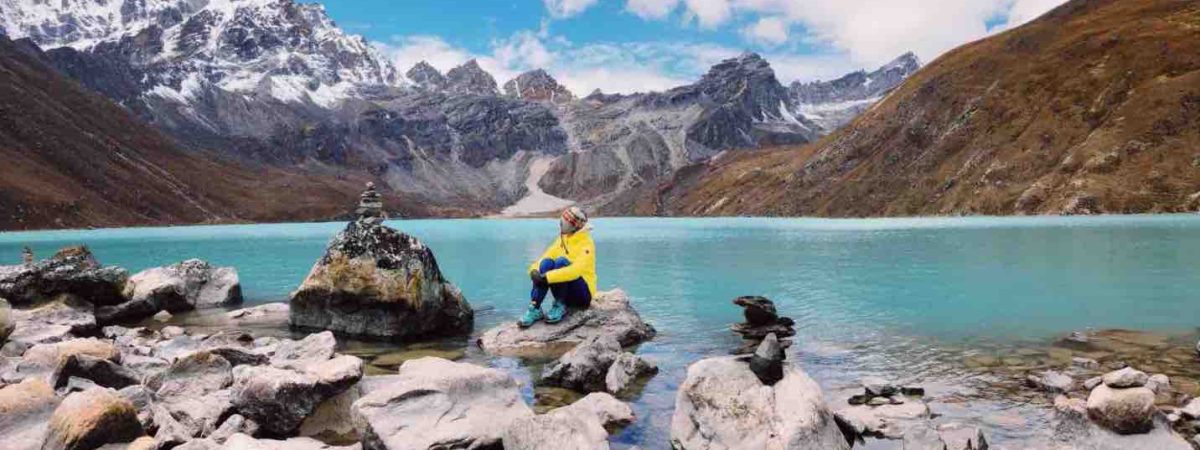
First and foremost, we wake up early to walk to Gokyo Ri Viewpoint. This is the most beautiful views point of the entire Khumbu region with the awesome looks of Thonak Tsho Lake and the Ngozuma Tsho Lake. We can walk to Ngozumpa Tsho glacier at 5,000 meters (only 3kms from the village). There’s also Scoundrel’s Viewpoint. Another option is to hike closer to the fifth Gokyo Lake, which has some promising Cho Oyu Base Camp views. The entire day will be exhilarating.
Overnight in Gokyo
Meal : Breakfast/ Lunch/ Dinner
Accomodation : Tea House
Walking / Driving : 5 hours
Day 09: Trek to Thangnak
Altitude: 4,700 m
We start the day by hiking past the Ngozumpa Glacier. On a very rocky trail, we get to the eastern glacial moraine. As we move closer to the mountains, the views get more inspiring. Eventually, we trek to the Thangnak; we resort placed in a very serene setting.
Overnight in Thangnak
Meal : Breakfast/ Lunch/ Dinner
Accomodation : Tea house
Walking / Driving : 6 hours
Day 10: Trek to Dzongla via Cho La Pass (5420m /17,783ft)
Altitude: 4,855m
This is among the most challenging trek days in the Everest region. We plan to wake up quite early and walk to the Cho La Pass. The top of the path has some spectacular views of Everest ranges that could rejuvenate you. After the incredible view, we start trekking to Dzongla; Cho La Pass connects Dzongla and Thagnak.
Overnight in Dzongla
Meal : Breakfast/ Lunch/ Dinner
Accomodation : Tea House
Walking / Driving : 8 hours
Day 11: Trek to Lobuche
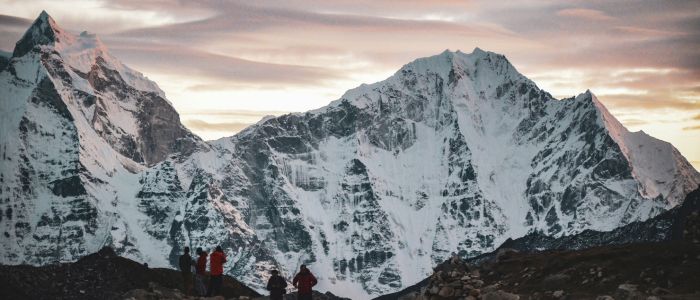
Altitude: 4,940 m
After spending the night at Dzongla, we will wake up the following day and continue our trek. Today’s destination will be Lobuche. At Lobuche, we will rejoin the classical Everest Base Camp Trek. But first, we start the day by following the moraine and descending alongside Chola Lake. As we walk further deep, we can see the memorial statues of the climbers. We walk to the Lobuche on an easy trail via Imja Khola Valley in the next hour.
Overnight in Lobuche
Meal : Breakfast/ Lunch/ Dinner
Accomodation : Tea House
Walking / Driving : 6 to 7 hours
Day 12: Trek to Gorak Shep ( visit Everest Base Camp 5,364m)
Altitude: 5,185m
Only on the 12th day of the Everest Three Pass Trek, we reach Everest Base Camp. Trekking in the Khumbu’s lateral moraine, we first hike to Gorak Shep. Here, we leave our bags and have some lunch. Then begins the exciting climb to the Everest Base Camp. The north camp of Everest is the base for mountaineers and trekkers. With the triumph of determination, you will be spending the most beautiful hours of your life in the Everest Base Camp. After some beautiful photos, we walk back to Gorak Shep.
Overnight in Gorak Shep
Meal : Breakfast/ Lunch/ Dinner
Accomodation : Tea House
Walking / Driving : 6 to 7 hours
Day 13: Trek to Lobuche via the Kala Patthar Viewpoint (5,555m)
Altitude: 4,910m
You should know that we don’t really see Everest peak from the Everest base camp. For that, we need to hike to Kala Patthar the next morning. We wake up early to witness Mt. Everest in all its glory during the sunrise. After the most beautiful views of your entire life, we hike down to Gorak Shep for breakfast. Packing our bags, we trace our route back to Lobuche, the destination for this day.
Overnight in Lobuche
Meal : Breakfast/ Lunch/ Dinner
Accomodation : Tea House
Walking / Driving : 7 to 8 hours
Day 14: Trek to Chhukung via Kongma La Pass (5,535m)
Altitude: 4,730m
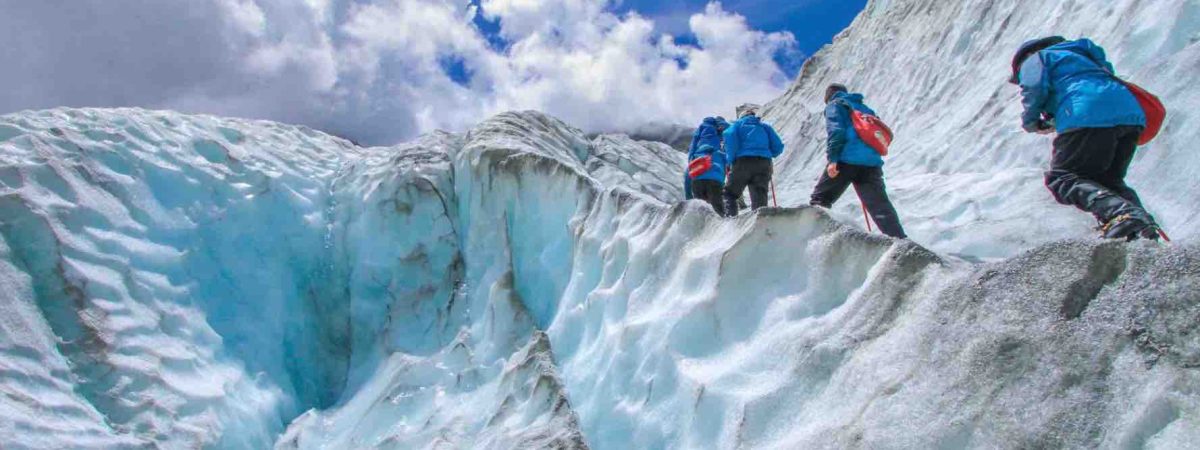
This is the final pass of the Everest Three Pass trek before getting back to Kathmandu. The hike starts from Lobuche. We ascend to Kongma La Pass via the path that is dotted with frozen lakes. Obviously, the top has an awesome panorama of the mountain.
Now onwards, we walk far from the Himalayas as we walk to the east of Nigyang Khola Valley. In a couple of hours, we each Chukhung Village that is mostly used as a yak pasture. However, there are some great guest houses where people often stop for acclimatization.
Overnight in Chhukung
Meal : Breakfast/ Lunch/ Dinner
Accomodation : Tea House
Walking / Driving : 6 to 7 hours
Day 15: Trek to Tengboche
Altitude: 3,855m
Duration: 6 hours
The day starts as we walk down to the Imja Khola valley. First, we walk via the familiar route of Dingboche. The stone-walled potatoes fields make this village looks very interesting. Then, walking via the alpine pastures, we can see the Kharkas (highland sheds) before getting to the Pangboche Village. Finally, we walk back to Tengboche. We visit a monastery here in the evening and join the Buddhist prayer.
Overnight in Tengboche
Meal : Breakfast/ Lunch/ Dinner
Accomodation : Tea House
Walking / Driving : 5 to 6 hours
Day 16: Trek to Namche Bazaar
Altitude: 3,440 m
Duration: 5 hours
Today, we will be walking in the classic route of Everest base camp; this means you will meet any trekkers along the way. Here, we walk via the forest, which is inhabited by rear wildlife such as musk deer, mountain goats, pheasants, or snow leopards. Walking on the slopes around mountains, we enjoy of view of Everest all the way back. In about 3 hours, we reach a very typical village of Namche.
Overnight in Namche Baazar
Meal : Breakfast/ Lunch/ Dinner
Accomodation : Guest House
Walking / Driving : 5 hours
Day 17: Trek to Lukla
Altitude: 2,850 m
Duration: 2.5 hours
Our final day of trekking is our final day; we walk to Lukla on a familiar route. Heading downwards from Namche, we first stop at Namche Bazaar. Then, we walk for a few hours to Hillary Suspension Bridge. We continue hiking to the Dudh Koshi River Valley, and then we walk for a few hours. In the evening, we celebrate the victory of such an extraordinary journey with a farewell dinner.
Overnight in Lukla
Meal : Breakfast/ Lunch/ Dinner
Accomodation : Guest House
Walking / Driving : 4 hours
Day 18: Fly back to Kathmandu
Our plan is to fly from Lukla to Kathmandu and end our Everest Three Pass trek today. If the weather is good, the flight is scheduled in the morning. The 40-minute of comfortable flight to Kathmandu bless us with an awesome view. This journey will bring a grand end to the journey. Back to Kathmandu airport, we will drive you to the hotel in Thamel. You will have some time for some shopping and dinner in the evening.
Meal : Breakfast
Accomodation : 3- star hotel
Fixed Departure
| Trip Date | Trip Status | |
|---|---|---|
| 01-09-2024 | OPEN | book now |
| 10-09-2024 | OPEN | book now |
| 14-09-2024 | OPEN | book now |
| 01-10-2024 | OPEN | book now |
| 06-10-2024 | OPEN | book now |
| 19-10-2024 | OPEN | book now |
| 25-10-2024 | OPEN | book now |
| 31-10-2024 | OPEN | book now |
| 09-11-2024 | OPEN | book now |
| 11-11-2024 | OPEN | book now |
| 18-11-2024 | OPEN | book now |
| 21-11-2024 | OPEN | book now |
| 25-11-2024 | OPEN | book now |
include / exclude
Trip Cost Includes
- International and domestic airport pick-up and drop-off by private car
- Kathmandu or Ramechap to Lukla and back airfare
- Three nights 3-star hotel in Kathmandu with breakfast
- Guide for 17 days
- a strong trekking porter for 17 days
- Breakfast, lunch dinner with tea and coffee during the 16 days of trekking
- 15 nights tea house accommodation in the mountains
- Lukla, phakding and Namche the pretty good accommodation with a hot shower, an attached bathroom room
- Three cups of hot drinks a day (Tea, or coffee)
- Everest area permits
- Khumbu municipality permits
- all local airports’ taxes
- Guide and Porter Insurance
- all governments taxes and company service charges
Trip Cost Excludes
- International flight ticket
- lunch and dinner in the city
- Tips for Guide and Porter
- travel insurance
Other things that have not been mentioned above are also on the exclusion list.
useful info
EBC 3 Passes trek DIFFICULTY
Trekking in the EBC three passes is a tough physical challenge, and being in good shape is crucial for an enjoyable experience. However, mental toughness is the most important factor. Most Himalayan trekkers are not professional athletes but regular people with strong determination. This trek is more challenging than Everest Base Camp (EBC) and Gokyo Lakes treks, even for experienced hikers. While no technical climbing is needed, you’ll cross three high passes, making it demanding. Expect long days, steep climbs, and descents requiring strong legs. Trekking poles are helpful, and a solid training plan is recommended. You’ll reach altitudes exceeding 5500m, requiring a slow, steady pace due to shortness of breath. It’s not a sprint, but a high fitness level is essential for trekking at such altitudes. If you’re comfortable walking 7-8 hours daily with a 1000m ascent for two weeks and possess a determined attitude, you’re fit for this trek.
Recommended Preparation for Everest Three Pass Trek:
Are you preparing for the Everest Three Passes? Start by improving your fitness with activities like running and biking. Strengthen your muscles with exercises like squats and lunges. Since the Everest 3 passes involve high altitudes, practice climbing stairs or local hills. Mental preparation is crucial, so stay positive and determined. Research the Everest 3 pass trek and local culture to set realistic expectations. Meditate to calm your mind and build resilience. Maintain a positive attitude to enjoy the journey and overcome challenges. Follow this plan for 2-3 months, and you’ll be well-prepared for the adventure. Read EBC difficulty.
More About Everest Base Camp 3 passes trek
Language in EBC 3 pass route
When you’re trekking the Everest Three Passes Trek, you’ll find that many people you come across can speak some English. Don’t stress if your Nepalese or Hindi could be better. Most importantly, learn “namaste” for saying hello and “dhanyabad” for thank you. Some locals also speak Sherpa, their language, but it needs to be written down. This can lead to different spellings for the same village names, like Dzonglha, Dzongla, or Zonglha. So, if you need clarification on spelling variations on your map, the menu at your tea house, or in your guidebook (which might be too heavy anyway), don’t worry too much. The local kids are especially curious and might want to chat with you. Just keep it simple with “namaste” and “dhanyabad,” and you’ll do just fine.
Villages in Everest three passes trek map
When you think about trekking through the Himalayas, you might picture a quiet and peaceful journey, but that’s not entirely accurate. Especially on the Three Passes Trek, you’ll encounter plenty of fellow trekkers, locals, animals carrying loads, and, most importantly, villages. Depending on your chosen path, you might come across five or six villages in just one day. All these villages, especially on the Everest 3 Pass Trek, offer essential things like food, places to stay, and friendly mountain-dwellers who can assist you as you ascend into the mountains.
If you trek alone and need guidance, you can even hire a guide from one of these villages to accompany you on your trek. This adds an extra layer of support and local expertise to your journey. So, the 3 passes trek is not just about the breathtaking landscapes but also about the vibrant life in these mountain villages, making it a rich and engaging experience.
Three Passes Trek Map
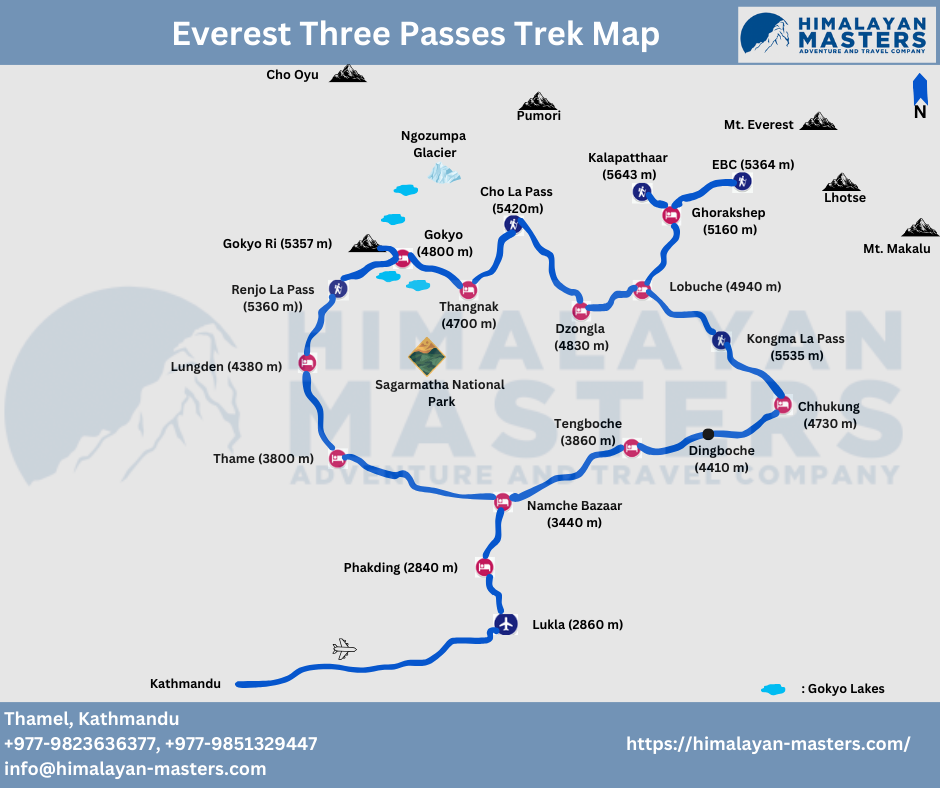
The Everest Three Pass Trekking is easy to follow, thanks to the prominent mountains that guide your way. Unlike dense forests where you might easily take a wrong turn, navigating here is straightforward. Most of the time, you’ll either be walking uphill, downhill, or across valleys with limited options for alternative routes. Don’t worry about accidentally trekking over a towering peak of 23,000 ft (7,000 m) – it’s not that kind of trail.
If you need locals to ask for directions, you can grab an Everest Three passes trek map in Kathmandu before starting your trek. This three passes trek map will come in handy at major junctions, ensuring you stay on the right path. If you’re interested in more details about the Three Passes Trek itinerary, you can explore additional information in the linked post.
The Everest base camp three passes trek is quite clear, and the mountains act as natural signposts. You won’t accidentally wander off course, and having a three passes trek map is a good idea, especially if you ever find yourself alone without locals to guide you.
Hiking from Jiri to Everest
Starting an exciting adventure, you can take a bus or jeep to Jiri or Shivalaya and start trekking towards Lukla. This less-traveled route offers a unique experience compared to the busier trail above Lukla. If you’re short on time, you can skip Jiri and take a bus or jeep to Salleri or Phaplu, getting you closer to Lukla by about two days from Jiri.
Starting from Jiri or Shivalaya gives you a quieter path, letting you connect more intimately with nature. Instead of flying to Lukla, this ground-based journey enables you to experience the region’s beauty at a different pace. For those in a hurry, starting from Salleri or Phaplu shortens the 3 passes trek, getting you to the heart of the journey more quickly.
Emergency and Turning Around
When you’re trekking in the Everest 3 Passes, there’s often a lot of talk about the 3 Passes trek being closed or difficult due to snow or other reasons. But here’s the thing: if you’re there to hike the Three Passes, go for it! Don’t let the rumors hold you back. Set out early in the morning, and if the trail, three passes, or weather seems too challenging, it’s totally okay to turn around.
The Everest Base Camp 3 passes trek is pretty close to nearby villages, so feel free to see the conditions for yourself. Take the chance, but be ready to change your plans if things seem too tough for your experience level. It’s better to be safe and enjoy your EBC 3 passes trek than to push too hard and run into trouble. Anytime u fell difficulty, remember EBC heli tour is an option.
Three pass trek with Himalayan Masters
Himalayan Masters Team
During our Everest 3 Passes Trek, you’ll be accompanied by our experienced guides and Sherpas who know the region inside out. They’ve been trekking and climbing for years, so you’re in capable hands. Our team is made up of local folks from the high Himalayas, known for their incredible stamina.
We take good care of our team members, ensuring they have fair pay, insurance, gear, a place to stay, and tasty meals. If someone is not feeling well or gets injured, they receive medical care promptly. A happy team makes for a happy trekking experience. All our guides have received special training in first aid, are certified trekking guides, speak English and another major language, and have knowledge about conservation and biodiversity. Plus, they’ve got rock climbing skills up their sleeves. So, you’re not just trekking; you’re in for a well-guided adventure.
We are specilized in Manaslu Circuit Trek. Do check.
Arrival (free airport pickup)
We provide free airport pickup for Everest 3 Pass Trek participants, with our team greeting you at the airport and driving you to your hotel. As a welcome, you’ll receive a Khada or marigold garland, ensuring you feel comfortable and supported in a new country.
Where does Everest 3 pass Trek Trek Start?
You’ll land in Kathmandu at Tribhuvan International Airport and arrange your own stay and meals. On the day of your trip, catch an early morning flight from Kathmandu to Lukla, with both flights included in the package.
Typical Day of Trek
Every day on the trek is an adventure, starting with an early breakfast and a trek from 7 AM to 8 AM. Our friendly Sherpa guides share interesting facts, and porters carry your luggage. After trekking for three to four hours, lunch and a one-hour rest are followed by a shorter afternoon walk.
Once at the lodge or tent, enjoy snacks, explore, and have dinner between 6 PM to 7 PM. Evening activities include conversations, games, or watching mountaineering documentaries. Your guide briefs you on the next day’s plan, and before bed, many like learning some common Nepali words. It’s a daily journey of exploration, learning, and friendship.
Trek End
On the final day of our three pass trek, we’ll start early in the morning and head to Lukla Airport for a quick forty-minute flight back to Kathmandu. Once we’re back in Kathmandu, you have the rest of the day to do whatever you please. We’ll have a lovely farewell dinner in the evening to wrap up our trekking adventure.
Trip Extension
Once your Everest three pass trekking is done, consider staying a few extra days in Nepal. You can use this time to explore Kathmandu and nearby areas. Other fun activities include going on a safari in Chitwan, trying paragliding, experiencing rafting, and enjoying canoeing.
Required Permit for Everest High Passes Trek
If you’re planning the Everest Three Passes Trek in Nepal, make sure to obtain two essential permits for EBC: the Khumbu Pasang Lhamu Rural Municipality Entrance Permit (NPR 2,000 per person) from Lukla or Monjo and the Sagarmatha National Park Entry Permit (NPR 3,000 per person) from Kathmandu or Monjo. These permits are necessary for accessing the Everest three pass trekking region and are usually included in your trip package.
Hotels in Everest Base Camp three passes trek
Trekking in Everest three passes is incredibly popular, and the places trekkers stay have improved. There were simple huts in the past, but now there are big hostels with running water, indoor toilets, and electricity. You can use the internet and take hot showers, but it might cost you around $10 per day. As you go higher into the mountains, the lodges become more basic, with basic furnishings and fewer amenities. Namche is an exception with some great lodges, and Himalayan Masters works with preferred lodges that are clean and well-kept. When it’s busy, they send a porter ahead to secure a room for the night since they can only be reserved after some time.
Trekking in Everest 3 passes is popular now, and the places to stay have greatly improved. Before, there were simple huts, but now there are big hostels with water, toilets, and electricity. You can use the internet and take hot showers, but it might cost around $10 daily. As you go higher, the lodges become more basic with fewer comforts. Namche has some great lodges, and Himalayan Masters works with clean, good lodges. When it’s busy, they send someone ahead to get a room for the night since you can only reserve them on time.
Food in three passes
When you stay at Everest 3 pass trek lodges, you get to choose what you want to eat and pay for it the next morning. Spending around £20 to £25 ($30 to $35) per day for meals and drinks is a good idea. While you can eat well without spending a lot, having a bit more in your budget ensures you enjoy your meals more. At lodges, there’s a variety of food options ranging from basic choices like dhal bhat to fancier ones like yak steak with blue cheese sauce. Keep in mind that prices might be a bit higher at fancier lodges. A tip for getting your food in everest faster is to order as soon as you arrive because it’s a ‘first ordered, first served’ system, especially in busy lodges.
Internet in Everest 3 pass trekking
In the Everest three-pass trek, you can still connect to WiFi, but it becomes trickier as you climb beyond Namche Bazaar. Free WiFi is scarce, so you’ll likely need to purchase cards from lodges. These cards grant access to the “EVEREST LINK” WiFi network and are available in various amounts, with the highest being around 1,000 NPR (approximately $10 US) for a 24-hour connection.
Remember that these cards might only sometimes be on hand, and lodges might not sell them at their face value. Some lodges might shut off their electricity after a certain hour, meaning no WiFi availability. It’s advisable to check with the lodges in advance regarding WiFi accessibility and electricity hours.
If you have a SIM card from Kathmandu, especially from Ncell, you can expect to get a cellular signal in many places, offering an alternative means of communication. It’s always good to plan and inquire about these services to ensure a smoother experience during your stay in the Everest three-pass trek.
Electricity and Water
In the Everest three passes, lodges have electricity for charging your camera and phone, but you’ll have to pay for it.
You can buy bottled water at lodges or shops or pay extra for boiled water. Himalayan Masters provides water purification pills if you need them. Avoid drinking water from rivers, taps, or wells during the trek, as it may not be safe.
Everest Three Pass Trekking Cost and Prices
When travelling to Nepal, it’s essential to know that the local currency, Nepali Rupee, can only be purchased after arrival. It’s advisable to carry US Dollars, preferably new bills, as they are widely accepted. You can exchange money at hotels in Kathmandu or use local ATMs. While Everest three pass trekking, it’s recommended to have local currency for better exchange rates. Inform your card issuer if relying on cards, and remember that meals during the Everest three-pass trek might cost $30-$35 per day. Budget around $500-$800, depending on trip length, for souvenirs and potential expenses like a helicopter ride due to weather delays.
In Kathmandu, a meal for two at a mid-range restaurant costs about $20, and taxi fares start at $0.45 with an additional $0.4 per km. Buses are a more economical option at around $0.15 for a 5km journey. Souvenirs in Kathmandu are reasonably priced. Be prepared for possible weather-related flight delays to or from Lukla, with the option of a helicopter ride costing $300-$500 per person. Overall, a spending budget of $500-$800, along with tips, is suggested for a comfortable experience in Nepal.
Read EBC trek cost in detail.
Three Everest Passes Trek Travel Insurance
Before you head off to your Everest base Camp Three Passes trek through the Three Everest Passes in Nepal; getting travel insurance covers medical evacuation and overall travel protection is crucial. This is especially important in remote areas with no other transportation options, where medical evacuation might be necessary due to altitude-related issues like Acute Mountain Sickness (AMS). Travel insurance also helps safeguard your investment in case of unexpected events before or during your trip. Take the time to research and choose insurance that suits your needs. Remember to carry proof of insurance and share a copy with your family. Make sure your insurance covers all the activities involved in your adventure.
ATMs in Everest
In the Everest 3 pass trek Region, you can find ATMs in Lukla and Namche Bazaar, but it’s not guaranteed that they will always work. To avoid any inconvenience, it’s advisable to bring cash with you from Kathmandu. Most places in this region, about 95%, prefer cash transactions, and only a few places in Namche Bazaar accept cards.
If the ATMs happen to be out of service, you can get a cash advance using your credit card in Lukla and Namche. However, it’s crucial to be prepared with enough cash for your journey up and down the mountains, as many places above Namche only accept cash. Please bring cash from Kathmandu because not all ATMs in Lukla and Namche might work. Just make sure you have enough money for your entire journey up and down the mountains.
Everest Three High Passes Trek Packing Checklist
For the Everest Three Pass Trekking, pack inner thermal wear, socks, underwear, sunglasses, a sun hat, and a woolen cap. Bring inner and outer gloves, a towel, flip-flops, and toiletries. Don’t forget water bottles with purification tablets, a 4-season sleeping bag, and a liner. Wear sturdy trekking boots, carry a 30-liter waterproof-covered daypack, and include trekking pants, waterproof trousers, t-shirts, and a fleece jacket. Bring a headlamp, power bank, extra batteries, a down jacket, and a wind/waterproof light jacket. Also, pack sun protection cream, wet wipes, and hand sanitizer for a comfortable trek.
FAQs
What is the three-pass trek?
A three-pass trek is an adventurous walk on the premises of Everest that goes along three passes: Renjo, Chola, and Kongmala. The first pass, Renjo La Pass, is 5,340 m, the second pass is Cho La Pass at 5420m, and the final pass is Kongma La Pass at 5,535m.


